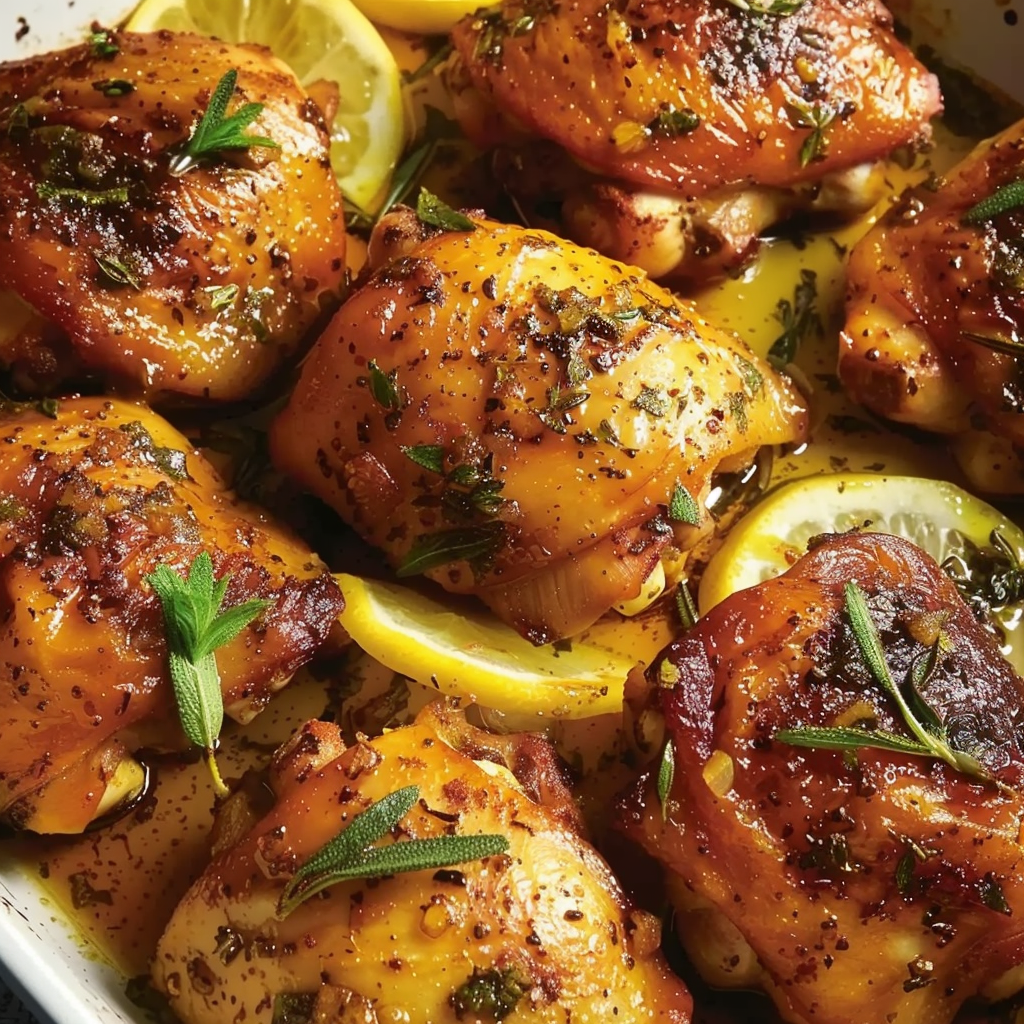Chicken Cordon Bleu is a classic dish that has earned a place in the hearts of food lovers worldwide, celebrated for its rich flavors and elegant presentation. The name “Cordon Bleu” translates from French as “blue ribbon,” which historically symbolized culinary excellence. However, despite its French name, the origins of Chicken Cordon Bleu are somewhat disputed, with some sources suggesting it was first created in Switzerland in the mid-20th century as a variation of the popular schnitzel, a breaded meat cutlet. The dish then gained popularity across Europe and the United States, becoming a staple in both home kitchens and fine dining establishments.
At its core, Chicken Cordon Bleu consists of a chicken breast pounded thin and then layered with Swiss cheese and ham. The chicken is carefully rolled, breaded, and either fried or baked to golden perfection. The result is a beautifully crispy exterior that gives way to a juicy, flavorful interior, with the melted cheese and savory ham adding a delightful richness. Often served with a creamy Dijon sauce, this dish balances textures and flavors, making it a versatile entrée that pairs well with a variety of side dishes.
Chicken Cordon Bleu has found its way into various cuisines, each adding its unique twist. From traditional French and Swiss recipes to American interpretations featuring different cheeses or even smoked meats, this dish remains a beloved classic that continues to evolve while maintaining its status as a symbol of culinary refinement.
Ingredients Breakdown
Chicken Cordon Bleu is a dish that relies heavily on the quality and selection of its ingredients to achieve its signature flavor and texture. The primary ingredients—chicken breasts, Swiss cheese, ham, and a creamy Dijon sauce—each play a crucial role in creating the dish’s distinctive profile.
Chicken breasts are the foundation of the dish, providing a lean yet tender canvas for the rich filling. It’s essential to choose boneless, skinless breasts of uniform size to ensure even cooking. For a slightly different flavor profile, turkey breasts can be used as an alternative, offering a milder taste that still complements the other ingredients well.
Swiss cheese is the classic choice for Chicken Cordon Bleu, known for its mild, nutty flavor and excellent melting properties. Gruyère, a type of Swiss cheese, can be used for a deeper, more complex taste. Alternatively, mozzarella or provolone can be substituted for a creamier, slightly sweeter result.
Ham adds a savory, salty contrast to the dish. Thinly sliced ham, such as Black Forest or prosciutto, works best, as it layers easily and enhances the overall flavor. For a twist, you can use smoked ham or even bacon for a richer, smokier taste.
The creamy Dijon sauce ties everything together, adding a tangy richness that complements the mild chicken and the savory ham. The sauce is made with a base of butter, flour, and milk, thickened into a roux, and flavored with Dijon mustard and Parmesan cheese. This sauce can be varied with the addition of herbs like thyme or tarragon for an extra burst of flavor.
Quality is key when selecting these ingredients. Using high-quality meats and cheeses ensures that each bite is flavorful and satisfying. For those with dietary restrictions, gluten-free breadcrumbs can be used to coat the chicken, and non-dairy cheese can be substituted to accommodate different dietary needs, ensuring that everyone can enjoy this timeless dish.
Kitchen Tools and Equipment Needed
To achieve the best results when making Chicken Cordon Bleu, having the right kitchen tools and equipment is essential. The following items are crucial for preparing this dish:
- Meat mallet: This tool is used to pound the chicken breasts to an even thickness, ensuring they cook evenly and are easy to roll.
- Plastic wrap: Used to securely wrap the chicken rolls, keeping them tightly packed and preventing them from unraveling during cooking.
- Sharp knife: Essential for slicing the chicken, ham, and cheese, as well as for cutting the finished rolls cleanly.
- Frying pan: A deep, heavy-bottomed pan is ideal for frying the chicken to achieve a golden, crispy exterior.
- Thermometer: A kitchen thermometer is crucial for checking the internal temperature of the chicken, ensuring it reaches a safe 165°F (75°C).
- Baking sheet and wire rack: These are used to finish cooking the chicken in the oven if needed, allowing air to circulate and keep the breading crispy.
- Saucepan and whisk: Required for making the creamy Dijon sauce, ensuring a smooth, lump-free consistency.
Step-by-Step Preparation and Cooking
Preparing the Chicken Breasts
To begin, lay the chicken breasts on a cutting board and season them on both sides with salt, pepper, garlic powder, and onion powder. This seasoning will penetrate the meat, ensuring each bite is flavorful. Next, place each chicken breast between two sheets of plastic wrap. This not only keeps the chicken intact while pounding but also helps to contain any mess.
Using a meat mallet, gently pound the chicken to an even thickness of about ½ inch (1 cm). Start from the center and work your way outwards, using the flat side of the mallet. Be careful not to pound too hard to avoid tearing the meat. The goal is to achieve a consistent thickness, which ensures that the chicken cooks evenly and is easy to roll.
If you don’t have a meat mallet, a rolling pin or a heavy skillet can be used as an alternative. Once pounded, the chicken should be uniformly thin and ready for the next step.
Assembling the Cordon Bleu
With the chicken breasts pounded thin, you’re ready to assemble the Cordon Bleu. Lay one of the chicken breasts flat on a clean surface. Begin by placing two slices of Swiss cheese directly on top of the chicken, covering as much of the surface as possible without overlapping the edges. Next, layer two slices of ham over the cheese, ensuring even coverage. Repeat this process with another layer of Swiss cheese and then another layer of ham.
Now, carefully begin to roll the chicken from one end to the other, tightly encasing the cheese and ham within. As you roll, tuck in the sides slightly to keep the filling from spilling out. The goal is to create a compact, secure roll.
Once rolled, place the chicken on a fresh sheet of plastic wrap. Wrap it tightly, twisting the ends of the plastic wrap like a candy wrapper to firm up the roll. This step is crucial because it helps the chicken maintain its shape during cooking. Secure the ends by tying them or twisting them tightly. Repeat the process with the remaining chicken breasts.
After wrapping, place the rolls in the refrigerator to chill for at least 30 minutes. Chilling helps the rolls set, making them easier to handle during breading and frying, and ensures they hold their shape while cooking.
Bread Crumbing and Frying
To prepare the chicken rolls for frying, set up a breading station with three shallow dishes. In the first dish, place the all-purpose flour. In the second, add the beaten eggs. In the third, spread out the panko breadcrumbs. It’s important to keep each station organized to make the breading process efficient.
Remove the chicken rolls from the refrigerator and unwrap them. Start by dredging each roll in the flour, ensuring an even coating on all sides. The flour helps the egg adhere to the chicken, creating a base for the breadcrumbs. Next, dip the floured chicken into the beaten eggs, turning to coat it completely. Let any excess egg drip off before moving to the breadcrumbs.
Finally, roll the chicken in the panko breadcrumbs, pressing gently to ensure the crumbs stick well. Panko breadcrumbs provide a light, crispy texture, but you can substitute with regular breadcrumbs if preferred.
For frying, heat about 2 inches (5 cm) of peanut or vegetable oil in a deep frying pan to 325°F (170°C). Carefully place the breaded chicken rolls into the hot oil, cooking for about 5 minutes per side. Use tongs to turn the rolls gently, ensuring even browning on all sides. The chicken should reach a deep golden brown color. If the exterior browns too quickly, but the internal temperature hasn’t reached 165°F (75°C), transfer the rolls to a wire rack set over a baking sheet and finish cooking in a preheated 325°F (170°C) oven.
For a healthier alternative, you can bake the breaded rolls in the oven at 375°F (190°C) for about 25-30 minutes, or until golden and fully cooked.
Making the Creamy Dijon Sauce
While the chicken is cooking, prepare the creamy Dijon sauce. Begin by melting 3 tablespoons of butter in a medium saucepan over medium heat. Once the butter is melted and bubbling, add the minced garlic and sauté until fragrant, about 1 minute.
Next, whisk in 3 tablespoons of all-purpose flour, creating a roux. Continue whisking for about 1 minute to cook off the raw flour taste. The roux should be smooth and slightly bubbly.
Gradually pour in 2 cups of milk, whisking continuously to combine the roux and milk without forming lumps. Keep whisking as the mixture heats up and begins to thicken. Once it reaches a simmer and has thickened to a creamy consistency, add ¼ cup of Dijon mustard and 1 cup of shredded Parmesan cheese. Continue whisking until the cheese is fully melted and the sauce is smooth. Season to taste with salt and pepper.
For additional flavor, consider adding fresh herbs like thyme or tarragon, or a pinch of nutmeg. These variations can enhance the complexity of the sauce, complementing the rich flavors of the Chicken Cordon Bleu.
Once the sauce is ready, remove it from the heat and keep it warm until serving.
Serving and Presentation
To serve Chicken Cordon Bleu, start by allowing the rolls to rest for a few minutes after cooking. This helps the juices redistribute and makes slicing easier. Using a sharp knife, slice each roll into even pieces, revealing the layers of chicken, ham, and melted cheese inside.
For a restaurant-quality presentation, arrange the slices neatly on a serving plate, slightly overlapping them. Drizzle the warm Dijon sauce generously over the top of the chicken slices, allowing it to cascade down the sides. Garnish with fresh herbs like parsley or chives for a pop of color.
Pair Chicken Cordon Bleu with side dishes that complement its rich flavors. Light, fresh options like a green salad, steamed asparagus, or roasted vegetables work well. For a heartier meal, consider serving it with mashed potatoes, rice pilaf, or buttered noodles.
When it comes to wine pairings, a crisp white wine like Chardonnay or Sauvignon Blanc enhances the dish’s creamy sauce and savory elements, while a light red like Pinot Noir can complement the ham and cheese without overpowering the delicate chicken.
Tips, Variations, and FAQs
Tips for Success
Making Chicken Cordon Bleu can be straightforward with a few key tips. First, avoid overfilling the chicken breasts with cheese and ham, as this can cause the filling to leak during cooking. Pounding the chicken to an even thickness is crucial for uniform cooking and rolling. Be sure to roll the chicken tightly to keep the filling secure, and chilling the rolls before breading helps maintain their shape.
To ensure the chicken stays moist and flavorful, do not overcook it. Use a meat thermometer to check that the internal temperature reaches 165°F (75°C). If you’re frying, ensure the oil temperature stays consistent to avoid undercooking or burning the exterior. When baking, covering the chicken loosely with foil during the first half of cooking can help retain moisture.
For make-ahead preparation, you can assemble the chicken rolls and store them in the refrigerator for up to a day before cooking. Leftovers should be stored in an airtight container and can be reheated in the oven to maintain crispiness. Avoid microwaving, as this can make the breading soggy.
Variations of Chicken Cordon Bleu
Chicken Cordon Bleu is a versatile dish that can be customized in many ways. For different flavor profiles, try using turkey breasts instead of chicken, or experiment with various cheeses. Gruyère offers a richer, more complex flavor, while mozzarella provides a milder, creamier alternative. You can also substitute the ham with prosciutto, smoked turkey, or even bacon for a different twist.
Health-conscious versions of Chicken Cordon Bleu include baking or air-frying instead of deep-frying. Baking at 375°F (190°C) for 25-30 minutes, or air-frying at 350°F (175°C) for 15-20 minutes, can give you a lighter dish while still achieving a crispy crust.
International variations also exist. In France, the dish may be prepared with veal or pork instead of chicken, while American versions sometimes use cheddar cheese or add herbs to the breading for extra flavor. You can also find rolled versions in Germany, where it’s known as “Schinken-Käse-Schnitzel,” using local cheeses and hams.
Frequently Asked Questions
Can I make Chicken Cordon Bleu in advance?
Yes, you can assemble the rolls and store them in the refrigerator for up to 24 hours before cooking. This can save time when preparing the meal.
What can I use instead of Swiss cheese?
You can substitute Swiss cheese with Gruyère, mozzarella, provolone, or even cheddar, depending on your taste preference.
How can I tell when the chicken is fully cooked?
The most reliable way is to use a meat thermometer. Insert it into the thickest part of the roll; the chicken is done when it reaches 165°F (75°C).
Can I bake Chicken Cordon Bleu instead of frying it?
Yes, baking is a healthier option. Bake the breaded chicken at 375°F (190°C) for about 25-30 minutes, or until golden and cooked through.
How do I prevent the filling from leaking out?
Ensure that the chicken is rolled tightly and securely. Chilling the rolls before cooking also helps them maintain their shape and keeps the filling intact.
Conclusion and Final Thoughts
Chicken Cordon Bleu is a classic dish that combines tender chicken, savory ham, and melted cheese, all encased in a crispy breadcrumb coating. To master this dish, it’s essential to start with quality ingredients, ensuring even thickness when pounding the chicken, and rolling the chicken tightly to secure the filling. Properly breading and cooking the chicken—whether frying or baking—ensures a perfect golden crust with a juicy interior.
Don’t hesitate to experiment with variations, such as using different meats or cheeses, or trying healthier cooking methods like baking or air-frying. Each variation offers a unique twist on this beloved dish, allowing you to tailor it to your taste and dietary preferences.
Remember, practice makes perfect. As you become more comfortable with the process, you’ll find it easier to achieve the perfect balance of flavors and textures. With a little patience and attention to detail, you’ll soon be serving up a Chicken Cordon Bleu that’s worthy of a blue ribbon.
Print
Creamy Chicken Cordon Bleu
Description
Chicken Cordon Bleu is a delightful and elegant dish that combines tender chicken breasts, savory ham, and melted Swiss cheese, all wrapped in a golden, crispy breadcrumb coating. This classic recipe is known for its rich flavors and pleasing textures, making it a favorite for special occasions or an impressive dinner at home. The dish is elevated by a creamy Dijon sauce, which adds a tangy, luxurious finish to each bite. Whether you choose to fry or bake it, Chicken Cordon Bleu is a timeless recipe that is sure to impress your family and guests.
Ingredients
- 4 boneless, skinless chicken breasts
- Salt, to taste
- Pepper, to taste
- 1 tablespoon garlic powder
- 1 tablespoon onion powder
- 16 slices Swiss cheese
- ½ lb ham, thinly sliced
- Peanut oil or vegetable oil, for frying
- 1 cup all-purpose flour (125 g)
- 4 eggs, beaten
- 2 cups panko bread crumbs (100 g)
- Creamy Dijon Sauce
- 3 tablespoons butter
- 2 cloves garlic, minced
- 3 tablespoons all-purpose flour
- 2 cups milk (480 mL)
- ¼ cup Dijon mustard (60 g)
- 1 cup shredded Parmesan cheese (100 g)
- Salt, to taste
- Pepper, to taste
Instructions
- Sprinkle the chicken breasts with salt, pepper, garlic powder, and onion powder, tossing to coat evenly.
- On a cutting board, place a chicken breast between two sheets of plastic wrap and pound until about ½ inch (1 cm) thick with a meat mallet, rolling pin, or heavy pan.
- Remove the plastic wrap and place 2 slices of Swiss cheese, then 2 slices of ham, then another layer of Swiss cheese, and another layer of ham. Evenly roll the chicken and place onto a new sheet of plastic wrap.
- Wrap the chicken in the plastic wrap tightly and use the excess plastic on the sides to twist, firming up the roll of chicken cordon bleu as you work. Tie the excess plastic. Repeat with the remaining ingredients, then chill the rolls in the fridge to set for 30 minutes.
- Meanwhile, preheat a tall-sided pan with 2 inches (5 cm) of oil to 325°F (170°C).
- After the rolls are set, prepare 3 separate large, wide dishes with the flour, beaten egg, and bread crumbs. Dredge the chicken first in the flour, then the egg, and then bread crumbs.
- Place the breaded chicken cordon bleu in the oil and cook for about 5 minutes per side, or until the outside is an even golden brown. If a good color is achieved and the chicken’s center is still not 165°F (75°C), place the chicken cordon bleu on a wire rack set over a baking sheet and finish the chicken in the oven at 325°F (170°C) until that temperature is reached.
- Meanwhile, in a 1 ½-quart saucepan over medium heat, melt the butter and cook the garlic until soft. Add the flour and whisk for 1 minute. Add the milk and whisk until fully combined with the roux and no lumps remain. Continue whisking until the mixture comes to a simmer and has thickened. Add the mustard, Parmesan cheese, salt, and pepper and whisk to combine. Remove the pan from the heat.
- Slice the chicken and serve drizzled with Dijon sauce.
Notes
This recipe can be customized to suit various tastes and dietary needs. You can substitute turkey for chicken, try different cheeses like Gruyère or mozzarella, or opt for a healthier version by baking the chicken instead of frying. To make preparation easier, you can assemble the chicken rolls a day in advance and store them in the refrigerator until you’re ready to cook. For best results, use a meat thermometer to ensure the chicken is fully cooked, reaching an internal temperature of 165°F (75°C). If you’re new to making Chicken Cordon Bleu, take your time with the rolling and breading steps to ensure a neat and secure roll. This dish pairs beautifully with fresh vegetables, a green salad, or a side of mashed potatoes. Enjoy your culinary creation!









